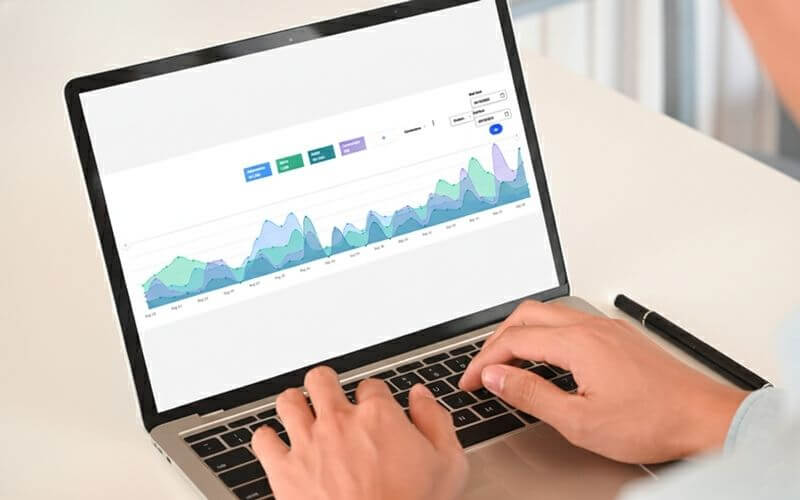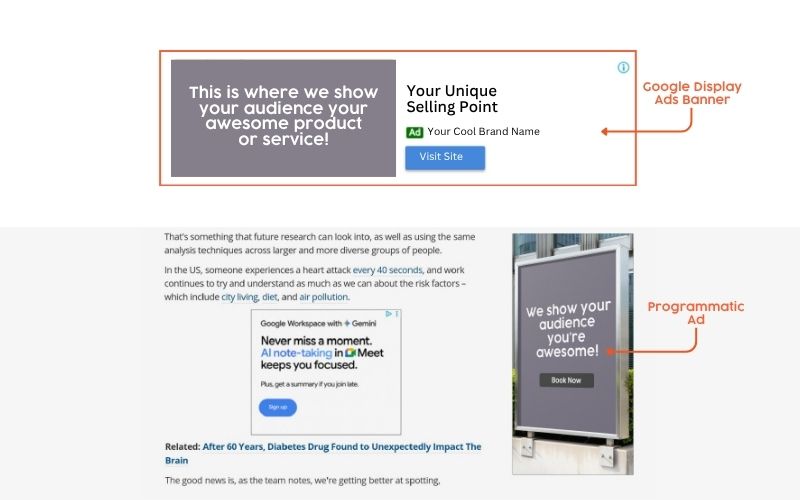We’re living in the scroll age, where attention is fleeting and relevance is everything. If your ad doesn’t engage instantly, it’s forgotten.
That’s where programmatic video advertising comes in. It helps you show up with purpose, in the right place, at the right time, with the right message.
Talking to a changing audience
Audiences are becoming more selective. In many cases, they’d rather watch a story than read a page of text.
Video is a visual and emotional medium that meets people where they are. It could be a patient in their GP’s waiting room, a carer scrolling on their phone, or a clinician unwinding in front of the TV.
Videos, particularly short-form or animated formats, are ideal for capturing attention, driving emotion and prompting action. They’re an ideal way to educate, entertain or emotionally connect with your audience.
Nowadays, programmatic video is a must-have for brands that want to cut through, connect and convert. A 2024 survey of 205 marketing professionals and online consumers found that:
- 98% of people have watched an explainer video to learn more about a product or service
- 87% of people have been convinced to buy a product or service by watching a video.
What is programmatic video advertising?
Programmatic video advertising uses automated technology to deliver video ads to your target audience based on real-time data. It uses AI, audience targeting and real-time bidding to serve the right message to the right person at the right moment.
This can happen across several formats:
- DOOH (digital out-of-home): Think digital screens in shopping centres, pharmacies or clinic reception areas.
- CCTV advertising: No, not surveillance! We’re talking closed-circuit TV networks in locations like hospital lobbies or aged care waiting rooms.
- Online and in-app video advertising: These are the 15–60 second skippable or non-skippable ads you see on YouTube, 9Now, 7Plus, SBS On Demand, or in your favourite health app.
Each format has its own strengths, and that’s where strategy comes in.
What’s the difference between DOOH, CCTV and digital video ads?
Understanding how each of these formats works helps you plan more effectively based on your campaign goals.
| Format | What does it look like? | Where does it show? | Why does it work? |
|---|---|---|---|
| DOOH (digital out-of-home) | Ads on digital screens in public places. | Clinics, shopping centres, chemists. | Grabs the attention of foot traffic; high visibility. |
| CTV ads | Ads delivered on closed-circuit TVs. | Hospital lobbies, waiting areas, aged care, and connected TV platforms such as 7Plus & SBS. | Captive audience in a healthcare mindset. |
| Video ads | Video ads are placed on relevant healthcare sites and articles. | YouTube, health apps, health-related sites. | Engages users where they spend downtime – on the go or at home. |
As you can see, each format offers different benefits. Combining all three enables you to cover more ground and connect with the same audience at different moments in their day and mindset.
The benefits of programmatic video advertising
Here’s why video is your secret weapon in healthcare campaigns:
| Stronger recall | Video combines sight, sound and motion to deliver messages that stick. |
| Better engagement | Users are more likely to pause, watch and click on a video than a static image. |
| Highly targeted | Programmatic platforms allow targeting by location, demographics, interests, online behaviour or even time of day. |
| Cross-device reach | Engage your audience across mobile, tablet, desktop and smart TVs. |
| Performance tracking | Get real-time data on views, clicks, completions and conversions. |
| Advanced targeting | Uses personally identifiable information to capture attention without breaching compliance. |
Where video fits in your marketing funnel
Video doesn’t replace your current campaigns – it amplifies them.
Here’s how:
| Top of funnel (awareness) | Run DOOH or programmatic video ads to introduce your brand, service or message to broad but relevant audiences. |
| Middle of funnel (consideration) | Use retargeted video ads to reinforce your value proposition, showcase success stories, or answer common questions. |
| Bottom of funnel (conversion) | Launch reminders that nudge your audience to book an appointment, download a resource, or register interest. |
And, for always-on brand awareness, CCTV advertising is a powerful, cost-effective channel that speaks directly to your audience in healthcare spaces where trust and attention are highest.
Ready to explore video?
If you’re curious about how to integrate video into your existing strategy, or want to test how programmatic video performs in your next campaign, we’re here to help.







